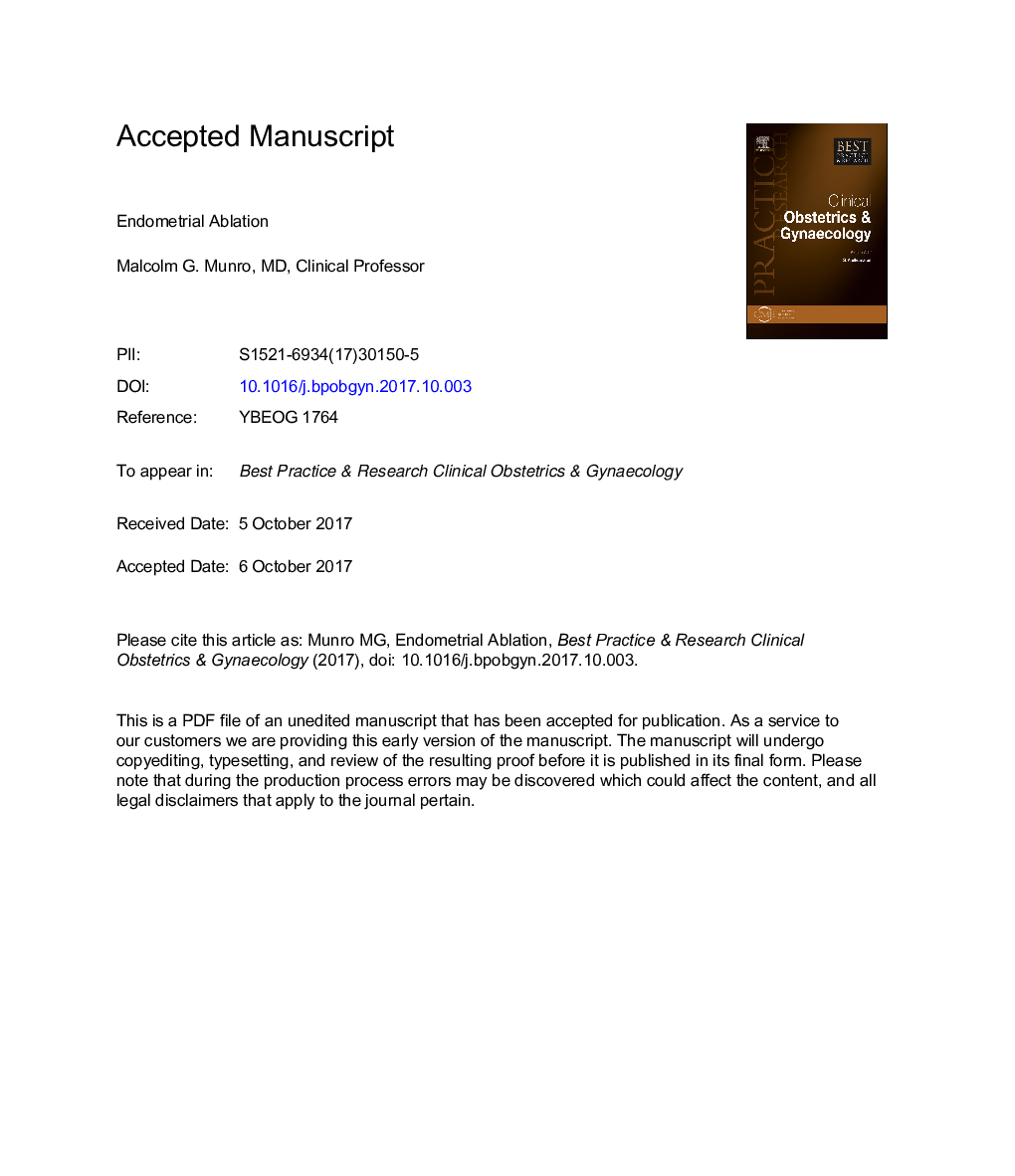| Article ID | Journal | Published Year | Pages | File Type |
|---|---|---|---|---|
| 8776577 | Best Practice & Research Clinical Obstetrics & Gynaecology | 2018 | 32 Pages |
Abstract
Endometrial ablation (EA) includes a spectrum of procedures performed with or without hysteroscopic direction, designed to destroy the endometrium for the treatment of the symptom of heavy menstrual bleeding (HMB) secondary to a spectrum of causes, but most commonly those that are endometrial in origin (AUB-E) or ovulatory disorders (AUB-O). Resectoscopic endometrial ablation (REA) is often mistakenly referred to as the “first generation” technique, while proprietary devices that do not use the resectoscope (nonresectoscopic EA or NREA) are often misperceived as “second generation” devices. Indeed, the origins of NREA date back to the late 19th century with the use of steam, and the early and mid 20th century, when radiofrequency and cryotherapy based NREA techniques were published - long before the resectoscope was used and reported. The NREA devices have also been mislabeled as “global”, a misleading term borrowed from the marketing departments of device manufacturers - there is no device that predictably treats the entire endometrium. Consequently, none can be construed as being “global”. Instead, EA is a procedure designed for women as an alternative to hysterectomy, or, perhaps, medical therapy, when future fertility is no longer desired. Women who select EA should anticipate a relatively low risk procedure that will likely reduce their HMB to normal levels or less. This paper will review the spectrum of EA techniques and devices, their clinical outcomes and adverse events, and explore their value compared to hysterectomy and selected medical therapies.
Related Topics
Health Sciences
Medicine and Dentistry
Obstetrics, Gynecology and Women's Health
Authors
Malcolm G. (Clinical Professor),
